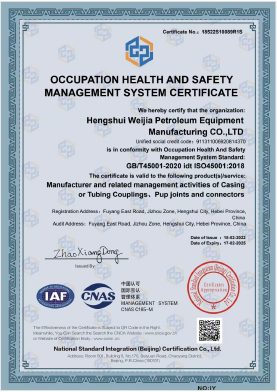- Afrikaans
- Albanian
- Amharic
- Arabic
- Armenian
- Azerbaijani
- Basque
- Belarusian
- Bengali
- Bosnian
- Bulgarian
- Catalan
- Cebuano
- Corsican
- Croatian
- Czech
- Danish
- Dutch
- English
- Esperanto
- Estonian
- Finnish
- French
- Frisian
- Galician
- Georgian
- German
- Greek
- Gujarati
- Haitian Creole
- hausa
- hawaiian
- Hebrew
- Hindi
- Miao
- Hungarian
- Icelandic
- igbo
- Indonesian
- irish
- Italian
- Japanese
- Javanese
- Kannada
- kazakh
- Khmer
- Rwandese
- Korean
- Kurdish
- Kyrgyz
- Lao
- Latin
- Latvian
- Lithuanian
- Luxembourgish
- Macedonian
- Malgashi
- Malay
- Malayalam
- Maltese
- Maori
- Marathi
- Mongolian
- Myanmar
- Nepali
- Norwegian
- Norwegian
- Occitan
- Pashto
- Persian
- Polish
- Portuguese
- Punjabi
- Romanian
- Russian
- Samoan
- Scottish Gaelic
- Serbian
- Sesotho
- Shona
- Sindhi
- Sinhala
- Slovak
- Slovenian
- Somali
- Spanish
- Sundanese
- Swahili
- Swedish
- Tagalog
- Tajik
- Tamil
- Tatar
- Telugu
- Thai
- Turkish
- Turkmen
- Ukrainian
- Urdu
- Uighur
- Uzbek
- Vietnamese
- Welsh
- Bantu
- Yiddish
- Yoruba
- Zulu
Innovative Techniques and Trends in Pipe Mill Production and Manufacturing Processes
The Pipe Mill Industry An Overview
The pipe mill industry plays a crucial role in the global manufacturing landscape, providing essential materials for various sectors, including construction, oil and gas, automotive, and infrastructure. As the demand for steel pipes continues to rise, understanding the processes, technologies, and innovations within the pipe mill sector is vital for anyone invested in industrial production or supply chain management.
What is a Pipe Mill?
A pipe mill is a facility dedicated to the production of pipes, typically made from steel, but also from other materials such as plastic or copper. The manufacturing process generally involves shaping raw materials, usually steel strips or plates, into tubular forms through various techniques. The pipes produced are subsequently used for a multitude of applications, ranging from fluid transportation to structural support in buildings and other infrastructures.
Manufacturing Process
The production of pipes in a pipe mill generally involves several stages
1. Material Preparation The raw material, often in the form of hot-rolled steel sheets, is inspected and cut to size. This initial step is crucial as the quality of the raw material directly affects the final product.
2. Forming In this stage, the flat steel sheets are processed into a cylindrical shape. This can be achieved through methods like UOE (U-forming and O-forming) or ERW (Electric Resistance Welding). The choice of forming technique depends on the specifications required for the pipe, such as diameter and wall thickness.
3. Welding After forming, the edges of the sheet are welded together to create a continuous pipe. The welding process must be carefully controlled to ensure structural integrity. Advanced techniques like laser welding or high-frequency induction welding are often used for their precision and efficiency.
4. Sizing and Straightening Once welded, the pipe is passed through sizing mills that establish its diameter and wall thickness. Simultaneously, straightening machines correct any distortions that may have occurred during the forming and welding process.
pipe mill

5. Heat Treatment To enhance the mechanical properties of the pipe, a heat treatment process may be applied. This can involve methods like annealing, which relieves internal stresses and improves ductility.
6. Coating and Finishing Finally, the pipes may undergo surface treatment, which includes coating to prevent corrosion and other forms of wear and tear. Various coatings, such as galvanization or polyethylene wrapping, are applied depending on the intended application of the pipe.
Market Dynamics and Trends
The pipe mill industry is influenced by numerous factors, including raw material prices, global trade policies, technological advancements, and shifts in consumer demand. Recent trends have shown a push towards sustainable manufacturing processes, with companies adopting environmentally friendly practices, such as reducing waste and energy consumption during production.
Moreover, the rise of smart manufacturing technologies has made significant inroads into the pipe mill sector. Automation, artificial intelligence, and Internet of Things (IoT) technologies are optimizing production schedules, improving quality control, and minimizing downtime, thereby enhancing overall efficiency.
Challenges Facing the Industry
Despite its importance, the pipe mill industry faces several challenges. Fluctuating raw material prices can significantly impact production costs, leading to instability in profit margins. Furthermore, compliance with stringent safety and quality regulations remains a constant pressure for manufacturers. Companies must invest in rigorous testing and certification processes to ensure their products meet industry standards.
Another major challenge is the competition from emerging markets, where lower labor costs can lead to cheaper production. To maintain competitiveness, established companies may need to innovate continually, focusing on product differentiation and advanced manufacturing techniques.
Conclusion
The pipe mill industry is a foundational element of modern construction and infrastructure. It not only supports various sectors but also evolves in response to technological advancements and market demands. As this industry moves forward, its ability to adapt and innovate will be key to sustaining growth and relevance in an ever-changing global landscape. With ongoing investments in technology and sustainability, the future of pipe mills looks promising, ensuring that they remain at the forefront of industrial production for years to come.
-
Tubing Pup Joints: Essential Components for Oil and Gas OperationsNewsJul.10,2025
-
Pup Joints: Essential Components for Reliable Drilling OperationsNewsJul.10,2025
-
Pipe Couplings: Connecting Your World EfficientlyNewsJul.10,2025
-
Mastering Oilfield Operations with Quality Tubing and CasingNewsJul.10,2025
-
High-Quality Casing Couplings for Every NeedNewsJul.10,2025
-
Boost Your Drilling Efficiency with Premium Crossover Tools & Seating NipplesNewsJul.10,2025







